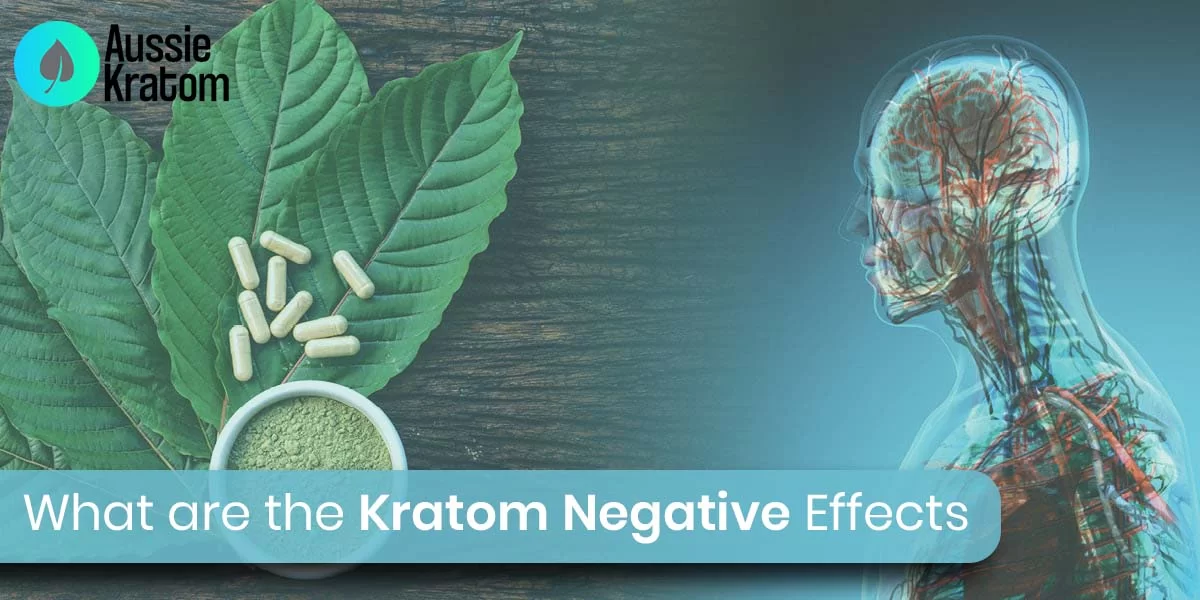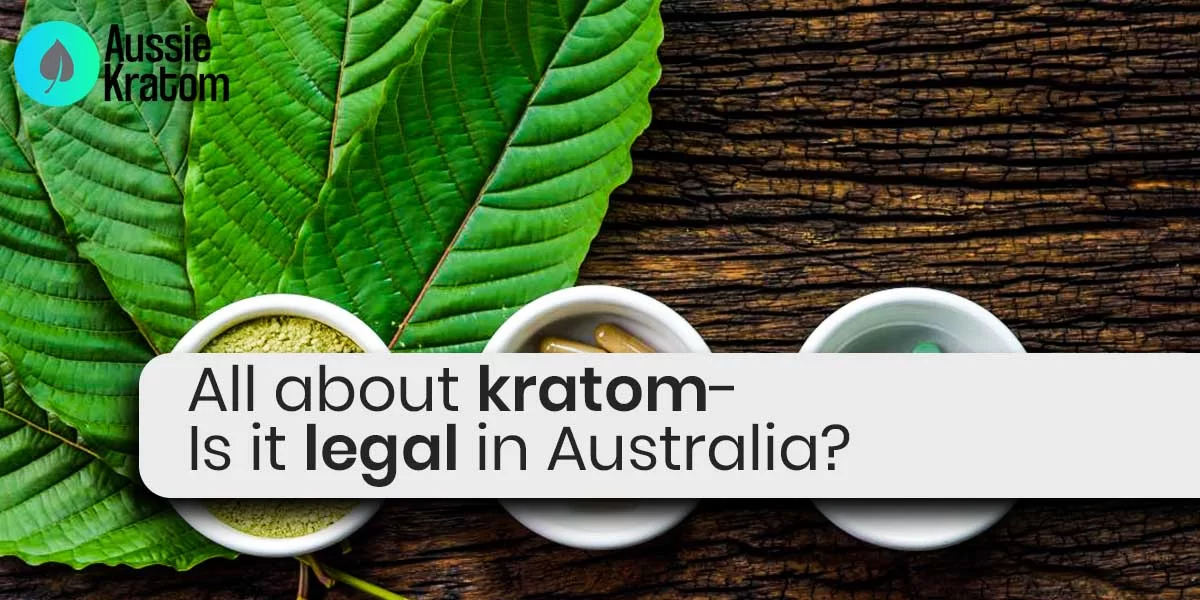The huge green leaves of the herb Kratom (Mitragyna speciosa) are indicative of its mild stimulant qualities. Its pain-relieving and mood-boosting properties are well recognized.
Compounds in the leaves called mitragynine mimic the effects of opioids like morphine.
The plant has been praised by many for its purported health benefits, however, it is currently illegal in Australia.
Its effects have been compared to opiates and other stimulant chemicals; it’s traditionally cultivated in Papua New Guinea, Thailand, Indonesia, and Malaysia.
Johns Hopkins Medicine found that 91 percent of self-reported users used the drug to alleviate discomfort.
Anxiety, depression, and opioid addiction were the most common diagnoses for its usage (67%, 64%, and 41%, respectively).
Patients detoxing from opioids reported a reduction in withdrawal symptoms in 87% of cases, and 35% maintained abstinence for more than a year.
Many Different Types of Kratom:
First question that can be raised, Do you make tea out of Kratom?
Kratom may be purchased as a tea, powder, pill, or even just the leaves themselves.
Why would someone use Kratom leaf? It was common practice to chew the leaves throughout Asia, particularly in Thailand.
What is the active ingredient in Kratom?
Various kratom strains have varying effects on their users. The two primary alkaloids, mitragynine, and 7-hydroxy mitragynine contribute to these differences in potency.
Leaves of different kratom strains may be identified by the color of their veins: white vein, red vein, and green vein.
What Benefits Does Kratom Offer?
Muscle relaxation, pain relief, a steady mood, and feelings of euphoria are just some of the effects that kratom has been credited with producing in its users.
What are the Kratom negative effects?
Side effects of kratom include
- Low blood pressure
- Gastrointestinal issues
- Nausea
- Fatigue
- Dizziness
- Vomiting

Study participants who had mild unfavorable effects were just 1.9%, whereas those who experienced severe adverse effects made up 19%.
However, at least 36 deaths have been linked to kratom use, according to the Mayo Clinic.
Is kratom legal in Australia?
There are still several countries that have laws against it despite its declining popularity. These include Denmark, Finland, Israel, Japan, Latvia, Lithuania, Myanmar, Malaysia, Poland, Romania, Russia, Singapore, South Korea, Sweden, Thailand, and Vietnam.
The Australian Criminal Intelligence Commission reports that for the last three years running, kratom has accounted for the vast majority (82%) of the weight of plant-based ‘new psychoactive substances’ captured abroad.
Some vendors would deliver kratom (Kratom Australia) in the mail while labeling it as “green tea” or “coffee.”
Australia outlawed kratom use in 2005. This plant is still classified as a Schedule 9 toxin (current edition being the Poisons Standard February 2022).
Schedule 9 pharmaceuticals are considered “prohibited substances” under the national classification system.
The Poisons Standard’s Schedules are binding under state and territorial law.
The question is, is Kratom allowed in Australia?
Every jurisdiction in Australia has banned kratom, so New South Wales is no exception. Schedule 9 substances, prohibited drugs, restricted plants, illicit drug precursors, and reagents are all considered unlawful under the Drug Misuse and Trafficking Act of 1989. (NSW).
Kratom is classified as a category 9 substance, making its possession illegal. As per section 18B(3) of the Drug Misuse and Trafficking Act of 1989, you may face up to a year in prison and/or a fine of $2,200 if convicted of this crime (NSW).
Making, manufacturing, or distributing a schedule 9 substance like Kratom, or knowingly taking part in these activities, is punishable by up to two years in prison and/or a $2,200 fine, according to section 18B.
But the following are all valid responses to such crimes:
To manufacture, produce, supply, or possess Kratom:
- If you are licensed or authorized under the Poisons and Therapeutic Goods Act 1966 (NSW);
- Your application to produce, distribute, or possess Kratom under Section 17D of the Act was approved by the Secretary of the Ministry of Health.
Defend yourself against kratom-related charges with the help of our Sydney drug lawyers.
Nonetheless, statistics reveal that over 63% of offenders are just fined after being found guilty.
Schedule 9 also includes synthetic psychoactive chemicals that attempt to mimic the effects of already banned drugs including cannabis, cocaine, and ecstasy.
Many of these chemicals are thus also prohibited under section 18B.
Use of any of the drugs under Schedule 1 of the Drug Misuse and Trafficking Act 1985 (NSW) is illegal. Drugs under category 9 are defined as substances for the purposes of the Poisons and Therapeutic Goods Act of 1966 and are therefore prohibited by this legislation (NSW).
Accordingly, Kratom is included in the list of poisons described in section 8 of the Poisons and Therapeutic Goods Act 1966 as “substances categorized in Schedule 9 of the current Poisons Standard” (within the meaning of Part 6-3 of the Commonwealth Act). In this case, we’re talking about the Commonwealth Poisons Standard, which will take effect in the United Kingdom in February 2022.
Can you define a medication in the ninth category?
A schedule 9 substance (also known as a poison) is a controlled substance with a high potential for abuse or misuse; as such, it should be illegal to produce, possess, sell, or use such a substance without prior approval from the Commonwealth and/or State and/or Territory Health Authorities for the purposes of medical or scientific research, or for analytical, teaching, or training purposes.
Toxins are categorized from 1–10 “schedules” according to the Standards (Scheduled drugs in Australia). The level of caution with which their availability to the public is recommended follows. These data demonstrate the increasing stringency of rules and regulations.
Schedule 3 drugs are considered therapeutic poisons in Australia. Although they are available over-the-counter without a doctor’s prescription, consulting a professional is recommended prior to their use.
Because of its psychoactive properties, the government has labeled kratom as a controlled substance.
Only with the approval of the Commonwealth and/or State and Territory health authorities may kratom be used in educational settings, scientific studies, and therapeutic trials.
Kratom is classified as a drug:
There is no standard system for categorizing the danger posed by these chemicals or poisons. The decision to classify a medication in a given schedule takes into account numerous factors, including the substance’s intended use, misuse potential, safety in usage, and medical need, of which toxicity is only one.
The maximum penalty for supplying or manufacturing a Schedule 9 drug is much lower than that for supplying or manufacturing a Schedule 1 or Schedule 2 substance, respectively.
Since new substances may develop in the future and be categorized as Schedule 9′ under the current Poisons Standard, the government has established an overarching offense to account for this.
Its purpose is to stop manufacturers from taking advantage of loopholes in the law by altering the chemical composition of medications.
The Substance Misuse and Trafficking Act specifies that a drug may be placed on Schedule 1 if there are concerns about its misuse, health dangers, and associated criminal activities.
Lists of “prohibited medications” and “prohibited plants,” together with the weights that define small, traffickable, indictable, commercial, and substantial commercial quantities, may be found in Schedule 1 of the Act.
The Commonwealth Legislation’s Poisons List has further details about schedule 8 drugs.

